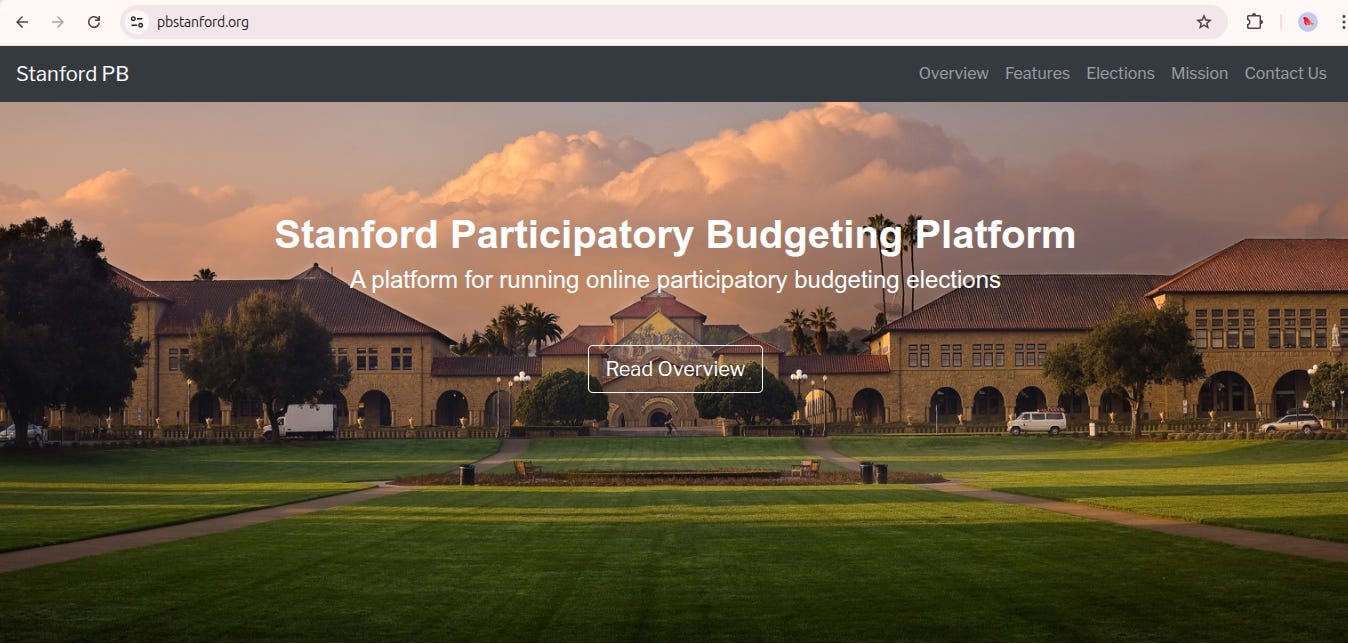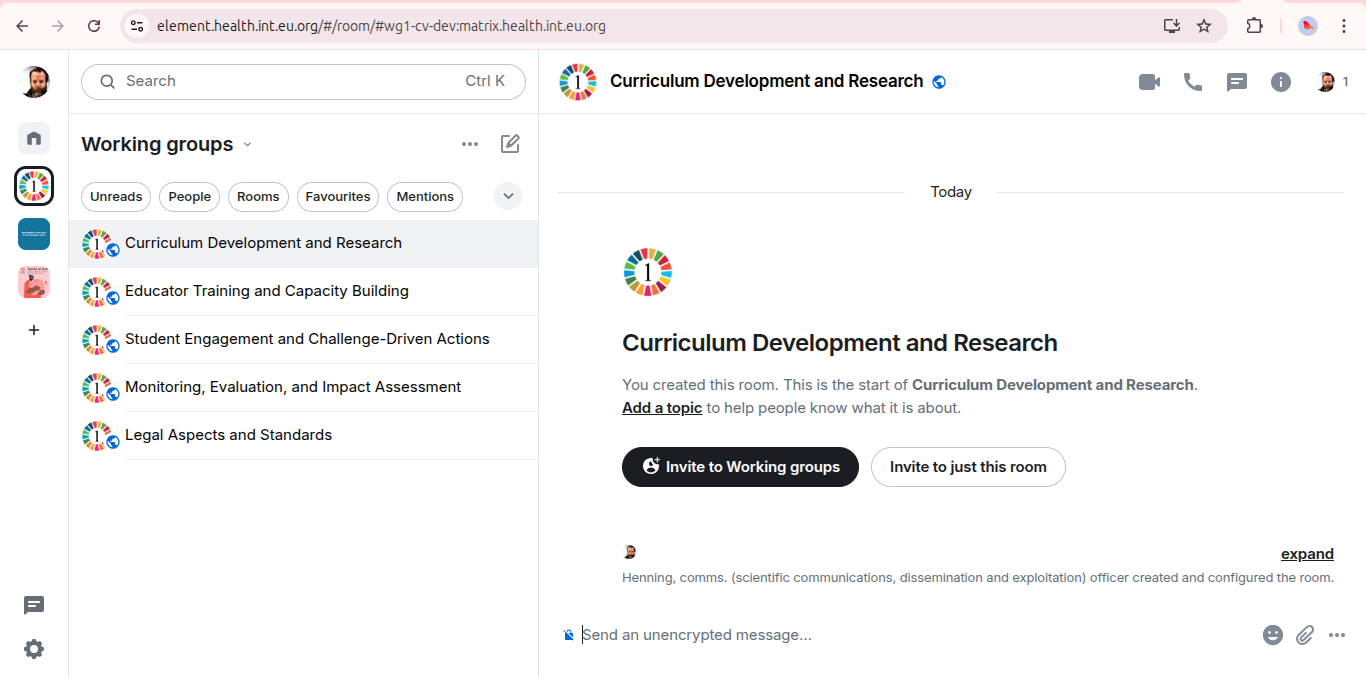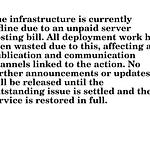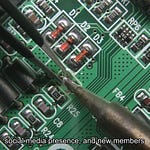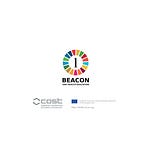Reading time: approximately ten minutes. Video time: combined fifteen minutes.
Executive summary: the complete open infrastructure supporting the EU BEACON One Health education network is now almost fully deployed and operational, integrating project management, participatory governance, encrypted communication and secure videoconferencing. Each system has been selected for transparency, accessibility, efficiency and long-term scientific and institutional sovereignty, following strict open science standards and criteria.
Please unsubscribe if not interested in receiving more such news. Next delivery on Friday the seventeenth of October.
The EU BEACON One Health education infrastructure now operates on two dedicated Ubuntu servers of exceptional performance, each with four terabytes of storage, thirty-two cores and one hundred twenty-eight gigabytes of RAM memory. These two physical machines together form a powerful and resilient backbone sustaining all our digital environments. The total cost of this infrastructure is barely one hundred euros per month, yet it delivers computational capacity equivalent to that of large institutional systems that consume hundreds of times more resources. This is possible because the entire architecture is open source, efficiently configured and maintained with full control over every layer of operation.
Such efficiency proves that digital sovereignty and high performance are not a privilege but a matter of design and responsibility. By investing in autonomy rather than in licences and intermediaries, we obtain continuous access to our tools and data without restriction, interruption or hidden cost. The servers support in real time the platforms for communication, videoconferencing, participatory governance, research coordination and project management, ensuring that collaboration flows as naturally and constantly as running water. They are always on, always available, allowing teaching, research, implementation and policy development to advance without delay.
This approach redefines what public infrastructure in science and education should be: lean, transparent, accessible and permanently operational. It shows that the core resources of a global network can be maintained at minimal expense while offering a level of reliability and speed previously accessible only to large institutions. Our servers stand as a statement of principle as much as a technical achievement: essential as water, they make participation continuous, open and equitable, empowering every member to contribute meaningfully at any moment from any place.
This infrastructure readies us to operate at scale, sustaining the coordinated work of thousands of participants across countries, disciplines and institutions. It provides the solid foundation required for a network of continental dimension, where teaching, research, implementation and governance can unfold in parallel without constraint. The capacity of our servers allows for simultaneous use by large numbers of members, ensuring stability and speed even under intensive workloads. It transforms what used to be exceptional coordination into a normal daily practice.
This readiness is crucial. The challenges addressed by the one health framework demand participation from a vast community of experts, educators, students and decision-makers. Our system makes such cooperation possible, efficient and sustainable. The ability to operate continuously at this scale means that every idea, initiative or project can immediately find a place in the shared structure, tested, improved and implemented without delay. In practice, this is the technological backbone of a true European network of excellence in formation, capable of growing organically as more teams join, expanding both reach and capability with minimal cost and maximum transparency.
It follows a breakdown of our software infrastructure:
Leantime is a behavioral-science-based project management suite explicitly designed for teams with diverse cognitive profiles. Its architecture integrates visual planning, narrative task framing and goal-oriented progress tracking to optimize executive function, motivation and clarity. Developed by a neurodivergent-led team, Leantime promotes inclusion by accommodating non-linear thinking and varied attention patterns, crucial in academic and creative work environments.
The platform’s adoption within EU BEACON ensures accessibility, inclusivity and accountability in managing tasks, milestones and cross-institutional deliverables. Unlike conventional systems, it values different cognitive strengths, enhancing team coherence and ethical productivity. Every project, from educational module design to policy mapping, is transparently traceable, supporting evidence-based management across the entire network.
The Stanford Participatory Budgeting Platform has also been fully deployed. Initially developed by the Crowdsourced Democracy Team at Stanford University, it has supported participatory budgeting in major cities such as New York, Chicago, Seattle, Boston, Paris, Madrid, Lisbon and Reykjavík, as well as in numerous universities and regional governments. The platform is now adapted to serve as the governance backbone of EU BEACON, ensuring every decision and financial allocation is democratically validated and publicly auditable.
All expenditures, priorities and project proposals within the action will be open to member evaluation and voting. This model reverses the opacity typical of many research structures, where funds often vanish into administrative inefficiency. Here, euros will be accounted for transparently, each decision publicly justified. In doing so, EU BEACON establishes a model of integrity: one where democratic participation replaces managerial secrecy and where community oversight replaces hierarchical gatekeeping. We are testing both internally, before opening up registration. We will send invites to everyone subscribed to this newsletter, and everyone you tell us by the comments or the action membership official site form.
We also encourage you to create a profile at eCOST, to facilitate the invitation to that platform, in case of not being already a member: https://health.int.eu.org/membership.html
Tests on Stanford Participatory Budgeting Platform and Leantime will be running for the next few days at these URLs, respectively: https://triage.health.int.eu.org, and https://tasks.health.int.eu.org. The new EU BEACON website will make navigating the services easier. We will also arrange videocalls to go through how each works, and publish tutorials to ease any learning curve, once all is ready by the end of next week.
Matrix Element is the secure, decentralized collaboration system now running on our servers. It employs the open Matrix protocol with end-to-end encryption and federation capabilities, granting full control over data, identities and communications. Governmental agencies such as the French State, the German Federal Armed Forces, and the UK National Health Service have adopted Matrix precisely for these attributes: independence from commercial surveillance, resilience, and legal compliance under European privacy frameworks.
EU BEACON employs Matrix Element to unify communication across working groups and partner institutions, allowing for private, verified, and permanent channels for collaboration. Users can download the Element app from Google Play or Apple’s App Store, or access desktop versions for Windows, macOS and Linux from element.io. Registration at our portal grants immediate access to structured chat rooms for introductions, mentorship, onboarding and technical coordination.
Our client is available at https://element.health.int.eu.org/, you can already register and start using the server through it, as well as the desktop and mobile applications.
BigBlueButton videoconferencing operates at https://tele.health.int.eu.org/show/tell/ with capacity for over one thousand concurrent participants, divided into rooms of eighty to one hundred fifty users each. Built specifically for education and research environments, BigBlueButton provides interactive tools such as shared whiteboards, polls, breakout sessions and multi-user collaboration.
It is the only open-source videoconferencing suite natively optimized for teaching, supporting deep integration with Moodle, Open edX and other academic platforms. Governments, universities and public institutions worldwide, including the French Ministry of Education, the Canadian government and the German public research infrastructure, use BigBlueButton for its security, scalability and autonomy. Unlike commercial systems, no user data leaves our control. Recordings remain encrypted and fully owned by the community.
The new site and full suite of software, releasing next Friday, will integrate new media kit assets, scheduling tools, surveys, translation services, geographic information modules and collaborative programming environments. It will also include new funding calls in the collective deadline calendar, including the next Horizon round for consortia formation. All deployed software is open source, modular, and federated under the same principles of transparency and autonomy. Strict adherence to open science standards is not only a matter of ethics but of operational efficiency and scientific validity. Open systems prevent dependency on opaque proprietary software, guarantee data reproducibility and long-term sustainability, and ensure that all research, educational and technical contributions remain verifiable, improvable and publicly accountable.
By controlling every layer, from infrastructure to application, EU BEACON ensures data sovereignty, reduces costs dramatically and channels all savings into expanding the scope of its educational and scientific missions. Each deployment and each local improvement adds value not only to our network but to the broader global commons. In this model, science is no longer confined within institutional walls. Knowledge becomes an evolving infrastructure, collectively maintained and shared. The network stands as a living demonstration that efficiency, transparency and democracy are compatible with high scientific standards.
As for the outreach ongoing: more than one hundred sixty thousand relevant media professionals, journalists, educators, policymakers and organizations are being prepared, awaiting for the initial communication and outreach effort. This first coordinated campaign will launch across the entire region of the COST framework, encompassing forty-one full member countries with complete rights to participate and receive full funding, one cooperating member country, Israel, with access to participation and partial funding, one partner member country, South Africa, with observer status and limited funding access, and fourteen near neighbour countries, including Algeria, Morocco and Tunisia, with eligibility to participate in activities and receive reimbursement for their contributions. Together they represent a broad community of practice extending across Europe, the Mediterranean and neighbouring regions, where collaboration and openness are essential for real progress.
The campaign aims to strengthen awareness of our shared mission and invite participation from key stakeholders, potential new members and allies. Each is encouraged to join national teams, working groups and leadership clusters to help implement the programme region by region. This marks the transition from infrastructure readiness to coordinated collective action, enabling the network to grow organically through engagement, trust and active participation.
Our communication systems are ready, and the outbound email service will be completed shortly with the final access approval. Once operational, it will allow transparent and secure outreach to partners and institutions worldwide. The campaign will invite participation through concise messages and through visual material, including introductory videos available at
https://www.youtube.com/@onehealthedtech
As said, a new version of the central site will be released along the rest of the services not yet running, or still in testing stage. It will include a complete media kit, a calendar with deadlines, shared scheduling tools to arrange meetings and group sessions, collaborative survey instruments, translation services, geographic information resources and open programming environments. All are freely available to facilitate participation, planning and knowledge exchange.
Every resource in this infrastructure is open source and compliant with the most rigorous open data and open science standards. This is a strategic necessity rather than a technical preference. It guarantees transparency, reproducibility and trust while ensuring that no component of our work depends on private interests or opaque systems. By maintaining full control of the technological stack, we preserve scientific sovereignty, reduce costs and reinvest savings into the research, education and community-building that sustain our mission.
Each improvement made to this shared environment, each contribution of code, translation or coordination tool, becomes a public good. These collective gains strengthen our capacity to educate, research and govern ethically, connecting schools, laboratories and communities beyond local boundaries. Open infrastructure is therefore not only a means of work but a statement of values: knowledge must remain accessible, transparent and in service of the public good.
Please adopt and use the platform widely, share it with your colleagues and collaborators, and report back any needs or suggestions that may help refine and expand our shared systems. The strength of this effort depends on mutual participation and collective improvement. Thank you for being part of the action.
I end up this long post with my most honest best wishes of a great week ahead to all colleagues, partners, allies and friends contributing to this shared endeavour. Every step we take together strengthens the structure we are building and moves us closer to the vision of a more transparent, ethical and cooperative scientific community, and proper one health education being a reality to empower children to ensure a prosperous future, as urgently needed. It took years of bloody effort to get here, under brutal violence. To some of our members, it was even worse. Let’s get it done, now we have the backing and funds to make it all a reality, ensure safety and health for all, despite the chaos and violence, the brutality ranging all over around us still.
My apologies for the delay in deploying it all, and kicking off our action as needed.
Henning (né Enric) Garcia Torrents (it/those, the dehumanized other)
Scientific communications, dissemination and exploitation officer

